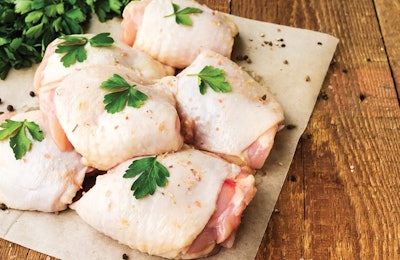
Shifting interest rates, falling chicken prices and the ongoing war in Ukraine color a darkening forecast for the U.S. poultry economy.
At the Delmarva Chicken Association’s 57th National Meeting on Poultry Health, Processing, and Live Production, Mark Jordan, executive director of LEAP Market Analytics, shared his outlook on the end of 2022 and beginning of 2023.
Rising interest rates
To combat historic rates of inflation, in 2022 the Federal Reserve raised interest rates. Jordan said the falling interest rates combined with rising consumer debt will chill overall spending.
This situation, along with the poultry industry’s spending on new infrastructure and acquisitions in the past decade, foreshadows less spending in the near future. For growers, higher interest rates will make it harder to finance new construction.
Falling protein demand
Protein demand is obviously fading. However, Jordan said, its falling from extraordinary to above normal levels of consumption.
In 2022, the majority of the key protein markets, including chicken, saw demand shrink as society normalized due to the lessening impacts of the COVID-19 pandemic. Boneless white meat demand remains high, he said, even above normal levels.
“The demand trajectory right now is very negative,” Jordan said. “I think that's concerning.”
War in eastern Europe
The ongoing war in Ukraine is destabilizing markets for petroleum and crops and creating uncertainty for global food supplies. This, added with the shifting situation surrounding the pound sterling in the United Kingdom, creates many hard questions in Europe heading into 2023.
Moreover, the dollar is now strong which harms the domestic chicken industry. When the dollar is more valuable than other leading world currencies like the pound and euro, exporters don’t do as well.
This caustic situation in Europe will continue to disrupt global grain supplies and create problems for trade.
















